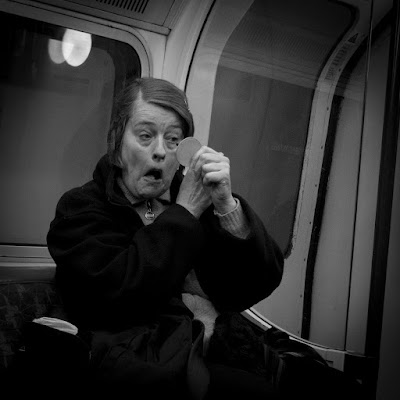The journey for this assignment has been very long. I started thinking about forgotten memories and how to express them by manipulating the photograph. Having been doing origami for many years, the choice was there. So I experimented with portraits from magazines to try and and figure out something. The idea behind was that how we perceive our lives also depends on how we remember things. Important moments that we remember as well as forgotten memories that lie beneath the surface. The result is a very odd and new portrait that is not looking exactly as we do in reality but in which we can still recognise ourself.


After trying to find out how to make my final portrait I googled about it and, unfortunately, I found out that a similar work already existed. That was a turning point as I had to decide wether to continue with it anyway or to change direction and start thinking on something else. Time was running out, I only had about 3 days to finish the assignment.
CHANGING DIRECTION.
With only a few days to go, I thought about working on forgotten memories from a different perspective. This time, I focused on how we sometimes process our memories. It has happened to me to not remember a certain thing or a certain moment, the memory of it suddenly started fading away so I imagined new things about it and, as time passed on, I could not distinguish about reality and invention. Sometimes I can make some memory better or I can simply replace an empty space in my memory with something new. It is a sort of re-shaping my past, to make it better or, at least, feel better.
So I ended up with a portrait, made using a flashgun fired off an umbrella with my daughter holding a silver reflector. Then, I played with shadows and various other settings on Lightroom in order to achieve a very ethereal look.
THE PRINTING NIGHTMARE.
As the title says, printing this image was a real nightmare. Time was running out and I needed a decent print of my photo in order to be able to embroider on it. Lets say I needed at least two prints. Of course, at UAL you can produce professional high quality prints, but it requires time and I did not have enough. So a technician suggested me to go to a snappy snaps point to have it done quickly. Tuesday morning I went to Ealing Snappy snaps and the guy decided to crop part of the image to fit it in the page. Then I saw him changing the colours. Anyway, for £9.99 I brought home the only print I could afford.
Embroidery was not too difficult (I can sew and do other manual things) but I really felt under pressure because I could not afford to do something wrong as it was my only copy. At last, I managed to finish it, although I am not entirely satisfied with the result and I think I am going to work more on it.


























































